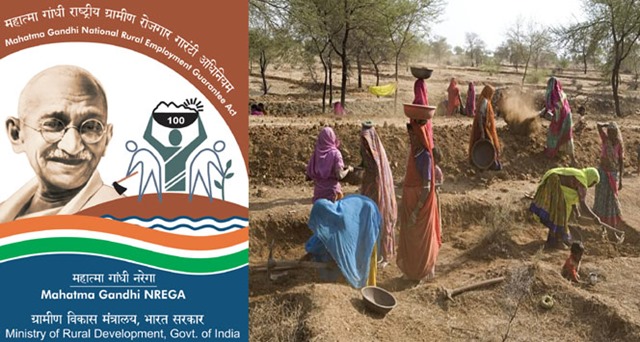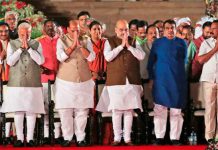Mahatma Gandhi National Rural Employment Gurantee Act
Recently Mahatma Gandhi National Rural Employment Gurantee Act (MGNREGA) completes a decade of operation. So, we are here with the brief of MGNREGA, which will be very important for various competitive examination.
Aim of MGNREGA:
- The popular MGNREGA is designed to improve the income protection of the people in rural areas by ensuring hundred days of salary occupation in a financial year, to a rural family whose associates offer to do inexperienced guide work.
- The purpose of the Act is to make resilient resources and enhance the income source platform of the rural inadequate.
- The choice of works recommended in the Act deal with causes of serious hardship such as famine.
- The high deforestation, complete land problem, in order to course of action of occupation creation is on a maintainable basis works recommended in the Act details causes of serious hardship like famine, deforestation and land break down completely, in order to the modus operandi of occupation creation is managed on a maintainable base.
Objectives of MGNREGA:
- Strengthening grassroots procedures of democracy
- Infusing visibility and responsibility in government
- Strengthening high decentralization as well as deepening procedures of democracy by providing a critical part to the local Panchayati Raj, Organizations in planning, tracking and execution
- To expand sources of earning
- Strengthening pure natural resources under control via works that deal with causes of serious hardship like famine, deforestation and ground break down and so motivate maintainable growth.
Brief History:
National Rural Employment Guarantee Act 2005 was later renamed as the “Mahatma Gandhi National Rural Employment Guarantee Act”was set up on Feb 2, 2006 from district Anantapur in the state of Andhra Pradesh, India and originally protected 200 real “poorest” zones of the nation. The Act was applied in phased way – 130 zones were included in the year of 2007–08. With its propagate over 625 zones across the nation, the leading program of the UPA Government has the prospective to increase the buying power of non-urban inadequate, decrease problems migration and to make useful resources in non-urban Indian. In addition, it can promote public and sex equal rights as around 23% employees under the program are Planned Castes, total 17% Planned Communities and around 50% women. In the year of 2010–11, about 41 thousand houses were applied on NREGA worksites.
Overview:
According to the Eleventh Five Year Plan (2007–12), the number of Indians living on less than $1 a day, called Below Poverty Line (BPL), was 300 million that barely declined over the last three decades ranging from 1973 to 2004, although their proportion in the total population decreased from 36 per cent (1993–94) to 28 percent (2004–05), and the rural working class dependent on agriculture was unemployed for nearly 3 months per year. The plan targeted poverty through MGNREGA which promised employment as an entitlement.
- Financial allocations for the NREGA increased steadily between 2006-2010 when it touched nearly Rs. 40,000 crores. Since then, however, allocation for NREGA has stagnated just below Rs. 40,000 crores. In 2014-15, allocations were cut dramatically to less than Rs. 30,000 crores.
- The UPA Government had planned to increase the number of working days from 100 to 150 before the 2014 Lok Sabha Elections in the country but failed.
- The NDA government has decided to provide 150 days for rain hit areas.
Status of Implementation:
- Since its implementation began the total expenditure on the scheme has amounted to over 3 lakh crore rupees. Out of this, 71% has been spent on wage payments to workers.
- The percentage of Scheduled Caste (SC) workers has consistently been about 20% and Scheduled Tribe (ST) workers have been about 17%. Women participation has rose to 57% well above the statutory requirement of 33%.
- Over 1,980 crore person-days employment have been generated in the programme. More than 65% of the works taken under MGNREGA are linked to agriculture and allied activities.

























